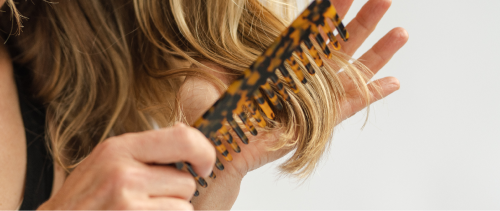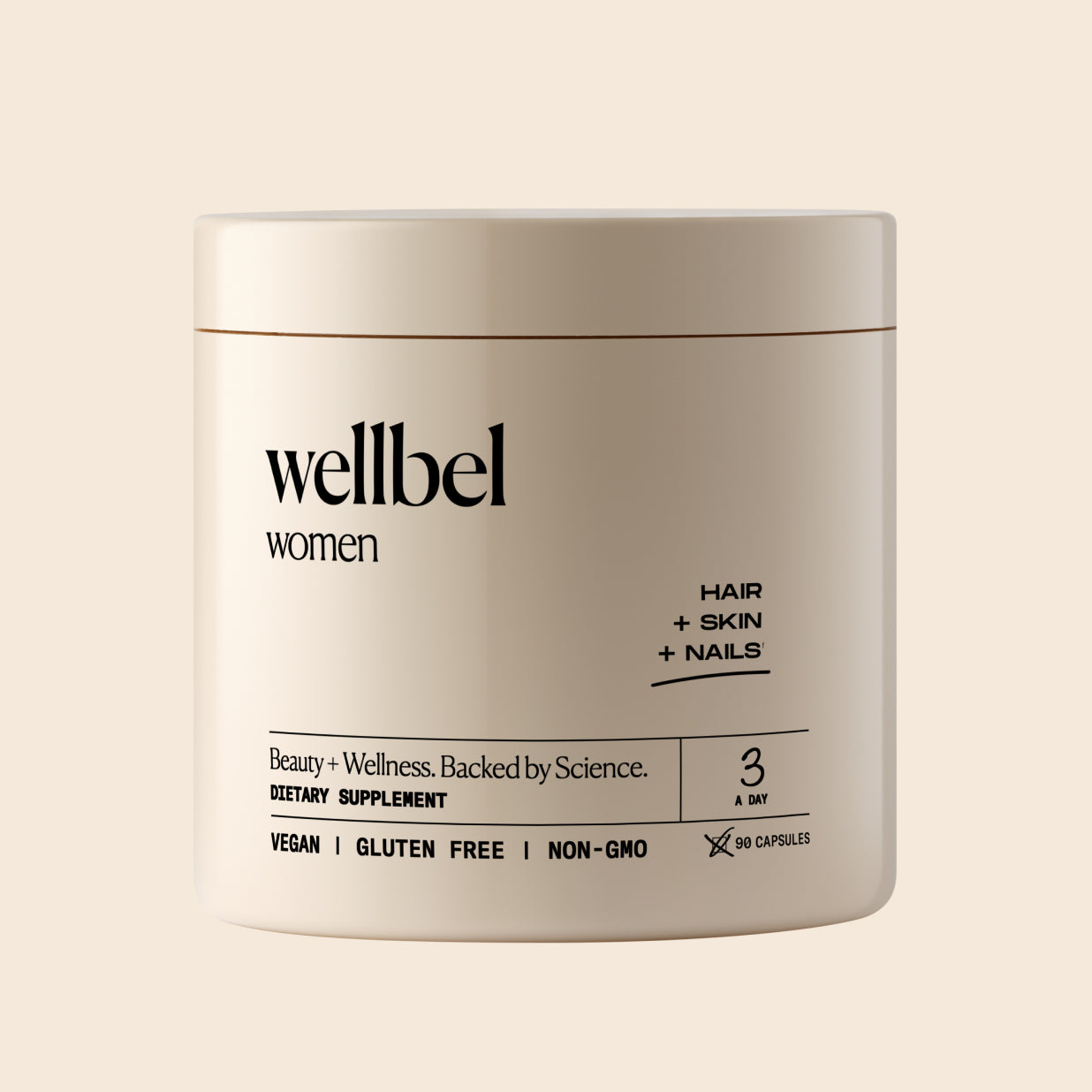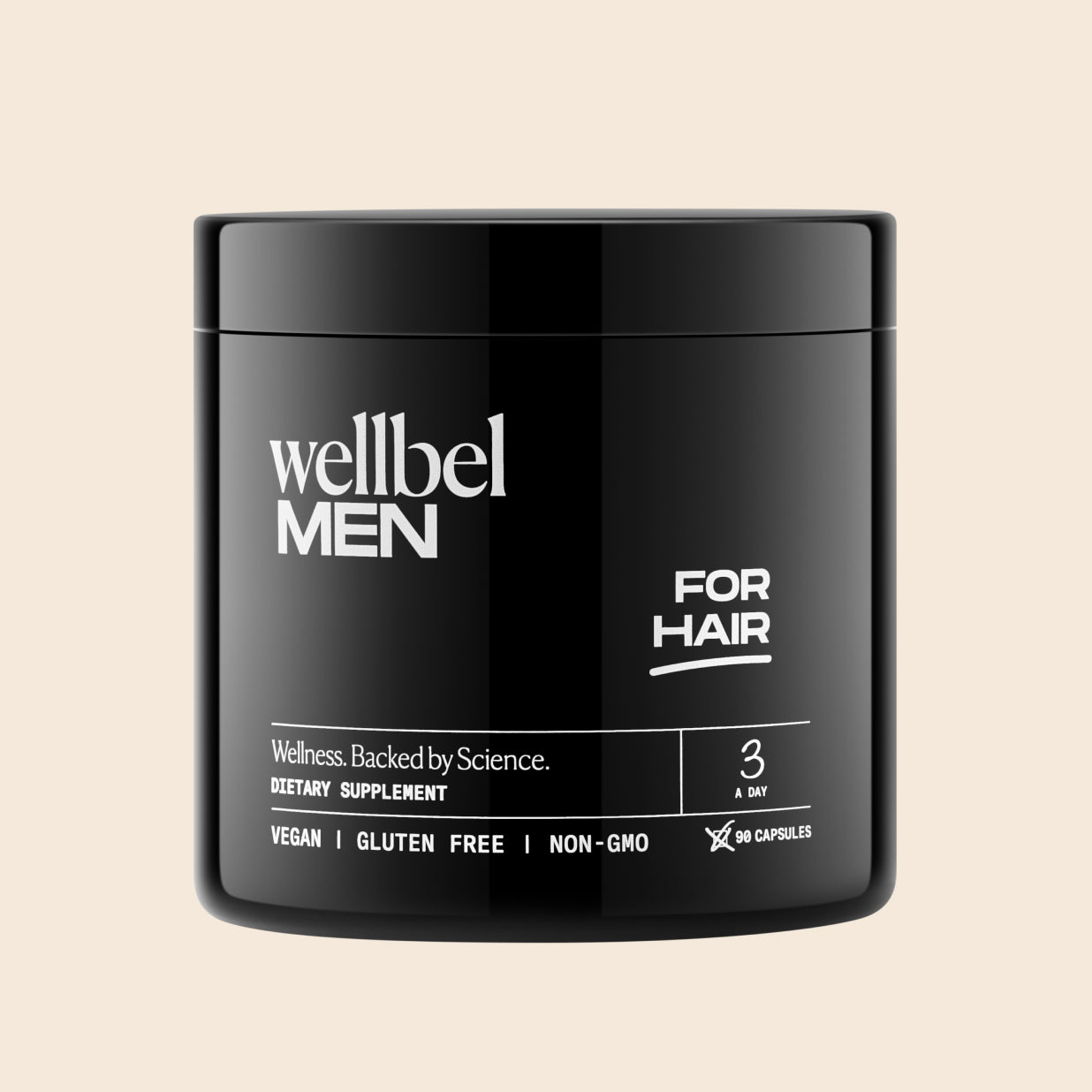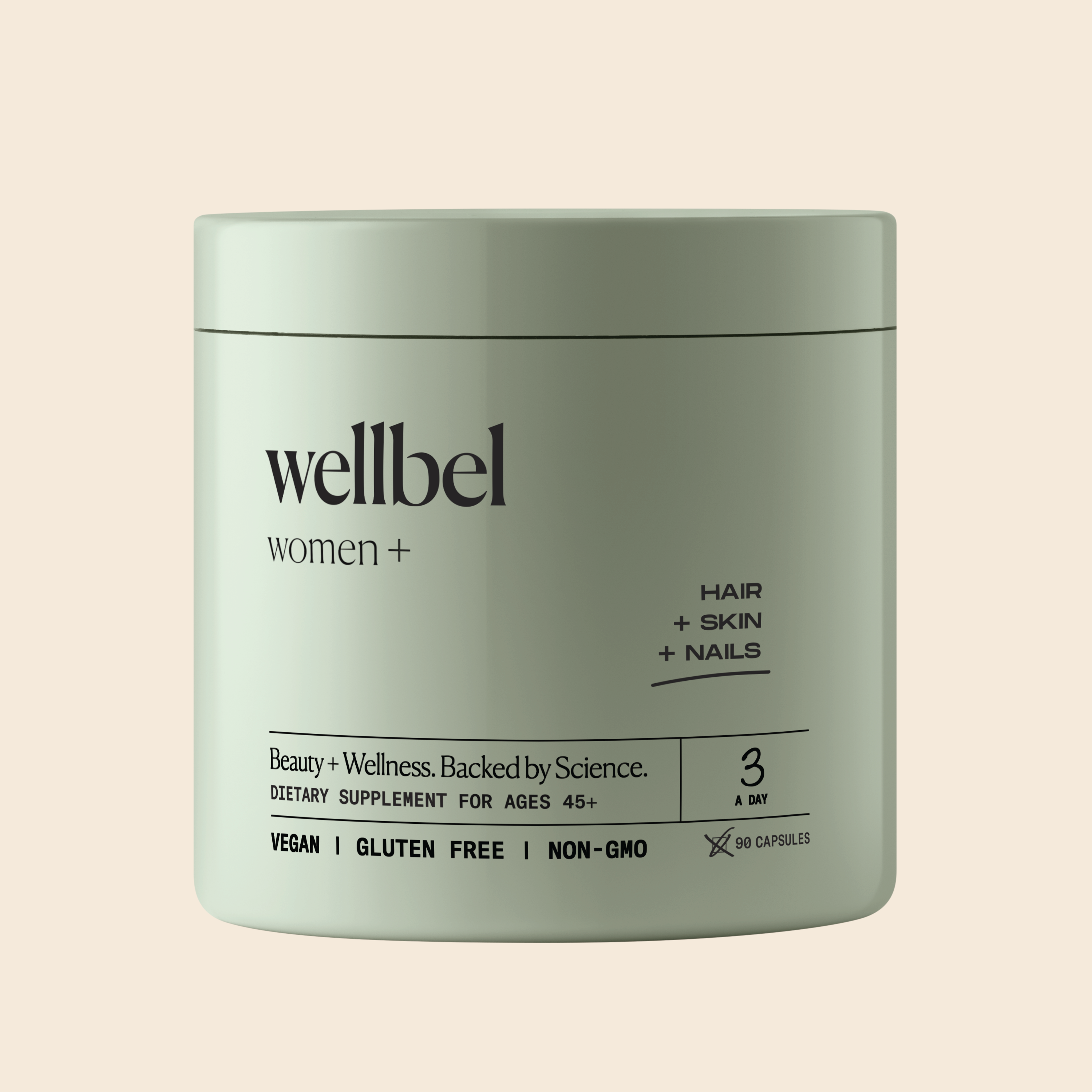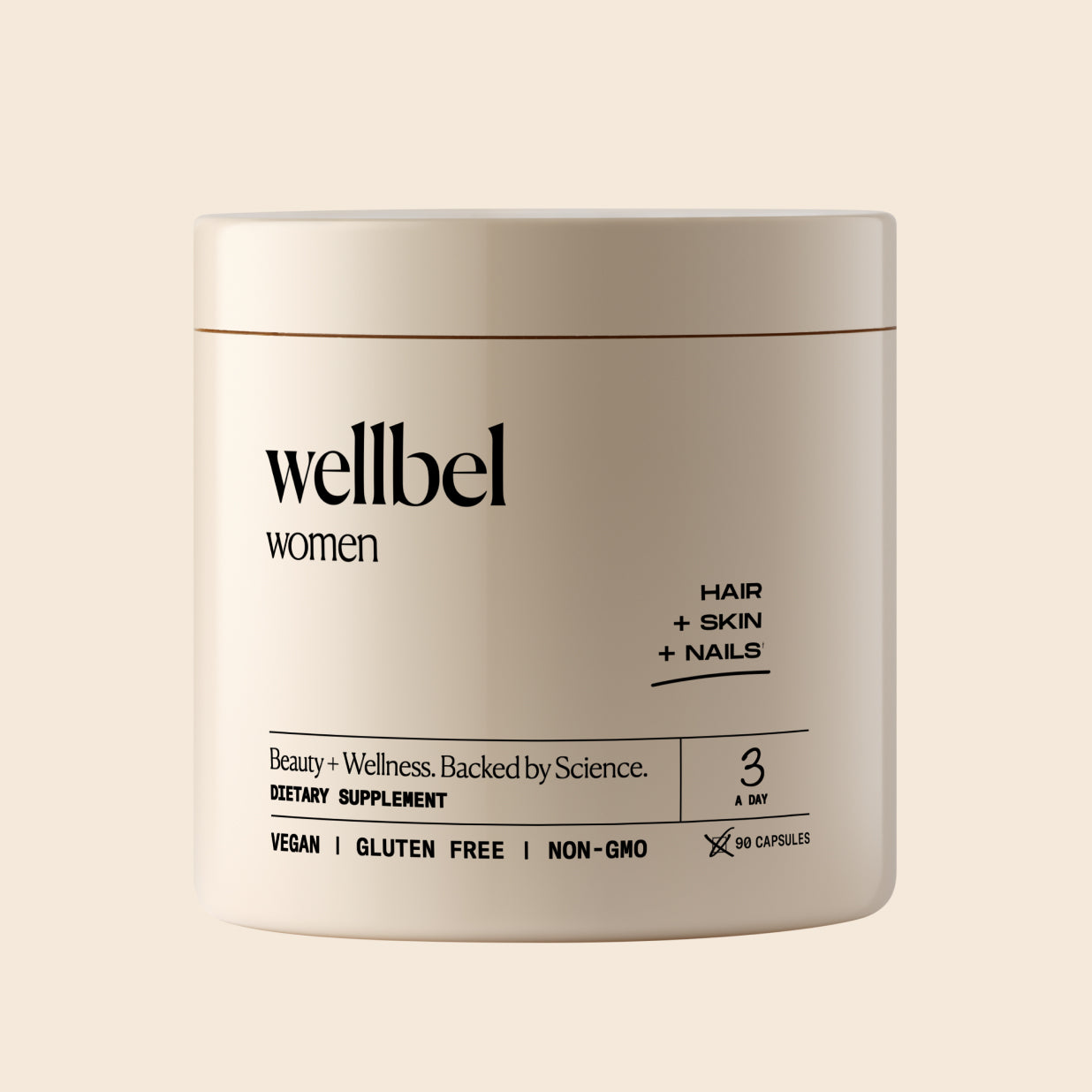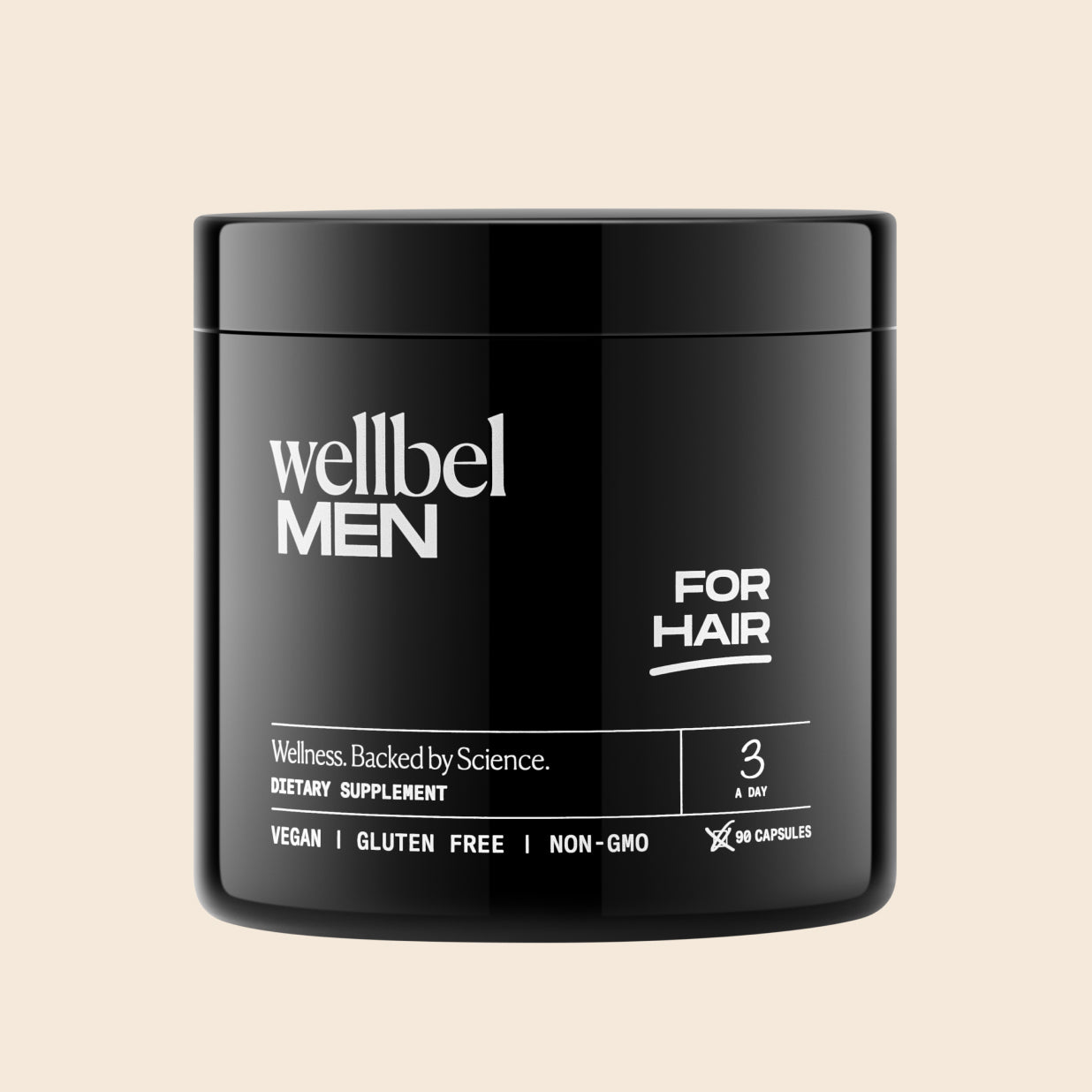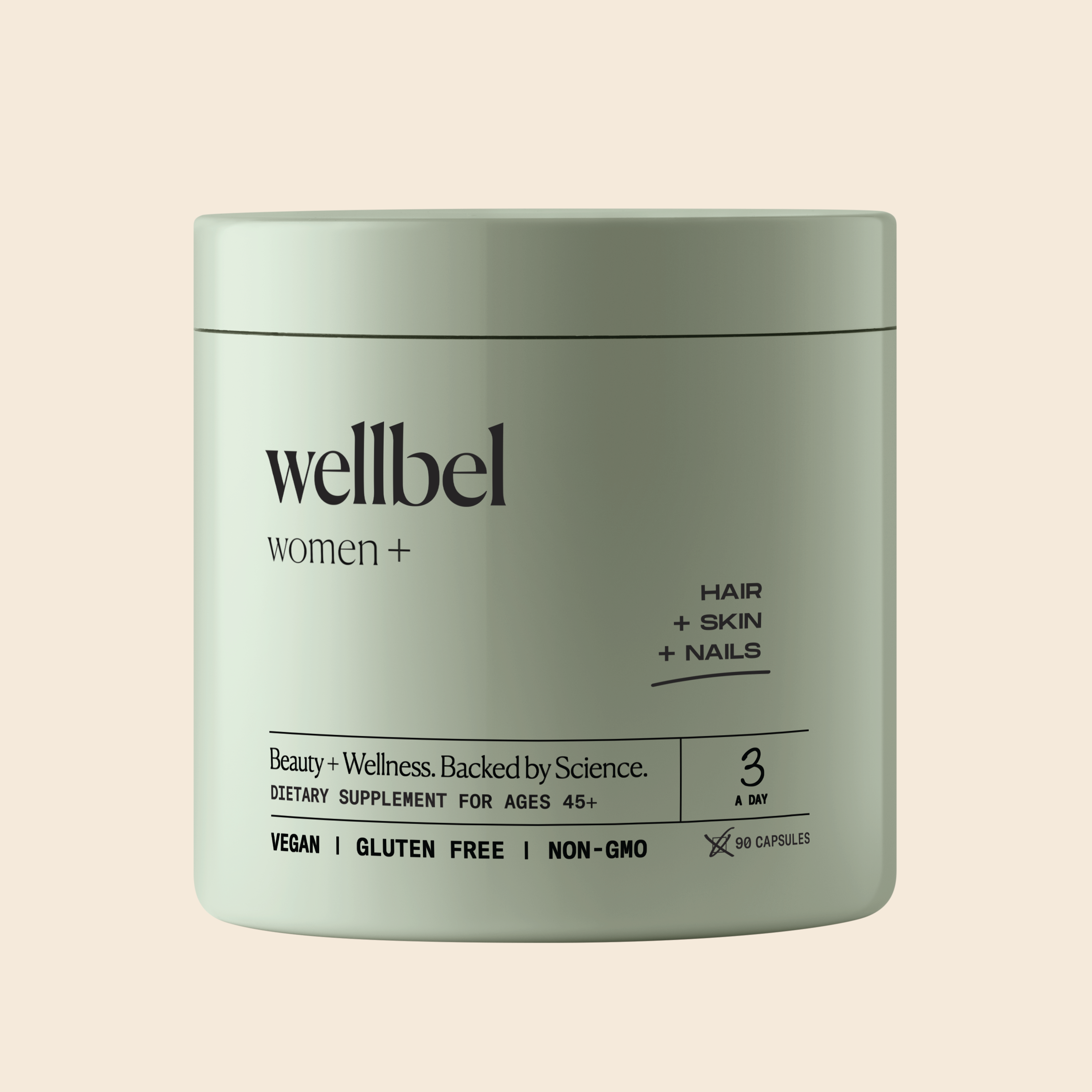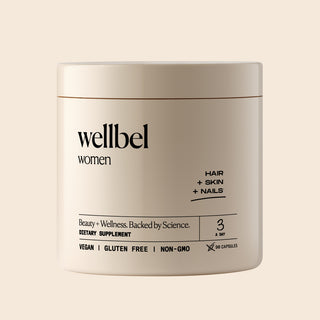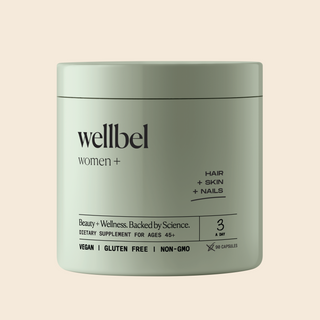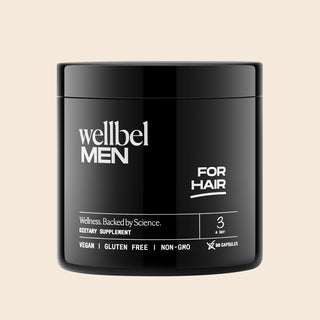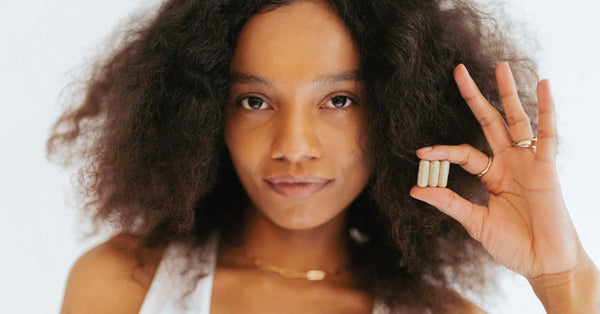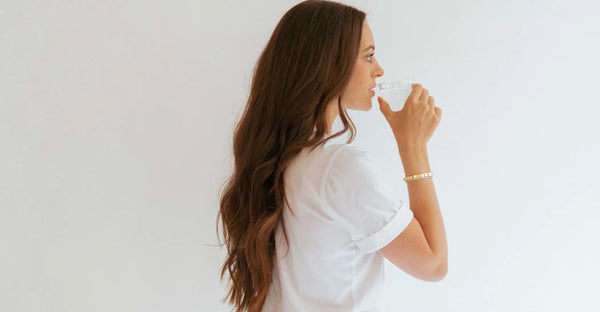Anyone else a total sucker for makeover sequences in movies? There’s something so fun about watching a person’s appearance (and self-confidence) transform. It’s probably why we periodically like to go for bangs or try out a new color. Change is fun — it helps us see ourselves in a new light.
Whether you're looking to go bold with a new hair color or simply want to cover up gray hairs, using permanent hair dyes can help you achieve that magical movie makeover moment. That said, it's important to remember that color treated hair requires special care to maintain its health and vitality.
Hair damage is a common side effect of using permanent hair dyes. The chemicals in these dyes can strip the hair of its natural oils, leaving it dry, brittle, and prone to breakage. But don't worry. There are steps you can take to protect your hair and minimize damage.
So many members of our Wellbel community color their hair. The ingredients in Wellbel help them retain their hair health while still achieving their hair color dreams. In this post, we'll provide you with some tips and tricks to maintain healthy hair while coloring it. Our goal is to help you achieve that exciting change you want while keeping your hair looking and feeling its best.
Understanding Why Dyes Can Cause Damage
Many people understand that coloring your hair can cause damage, but do you know why? Let’s break it down. What’s actually happening when we apply dye?
How do Bleach, Permanent, and Semi-Permanent Dyes Work?
Bleach, permanent, and semi-permanent hair dyes work in different ways to change the color of your hair.
Bleach works by removing the natural color from your hair strand, which is located in the hair shaft. This process opens up the outer layer of the hair cuticle and allows the bleach to penetrate the hair strand and lighten it. For people with especially dark hair, bleach plus a light developer (aka hydrogen peroxide) are usually necessary to get hair light enough to apply color.
Permanent hair dye also works by opening up the hair cuticle and depositing color molecules into the hair shaft. This changes the natural color of the hair and is typically more long-lasting than semi-permanent hair dye.
Semi-permanent hair dye, on the other hand, only coats the outside of the hair cuticle and does not penetrate the hair shaft. As a result, it fades over time and gradually returns to your natural hair color.
It's important to keep in mind that all hair dyes can cause damage to your hair, but taking proper precautions and maintaining a healthy hair care routine can help to minimize the damage.
The Pros and Cons of Organic Dyes
Over the years, hair care professionals have sought out more options when it comes to hair dye, for their customers’ hair health and their own sake — dyeing hair can get a little dangerous when you’re spending that much time around harsh chemicals. Now, you can easily find organic and non-toxic dyes.
The main advantage of using organic hair dyes is that they tend to be gentler on your hair health, as the natural ingredients are less likely to cause damage. They are also free from harmful chemicals like ammonia and parabens, which are commonly found in non-organic hair dyes.
Non-toxic hair dyes often have a longer shelf life and can provide more intense and long-lasting color results. However, these products labeled as non-toxic may still contain some chemicals that can cause an allergic reaction or irritation.
At the end of the day, the best piece of advice we can give you for minimizing damage during your coloring treatment is to go to a salon. A trained professional can prioritize your hair’s health, minimize the risk of an allergic reaction with a patch test, and ensure you’re getting the right formula for your desired color.
Building Your Color Treated Hair Care Routine
We say all this not to dissuade you from coloring your hair, but to arm you with information so you can take steps to protect hair from damage and minimize hair loss and split ends. Let’s talk about how to do that.
Planning Your Next Hair Wash
There’s a myth in hair coloring that you need to wait a few days to wash so that the color lasts longer. In all likelihood you will end up waiting a bit before you next wash your hair because you’ll have a fabulous blowout, but you don’t necessarily need to. It won’t make a difference.
What you can do is make sure your shower is prepped with color-focused shampoos and conditioners designed to help you repair damaged hair. We’d also recommend keeping your showers a little on the cool side to help cuticles contract and close. If you’re a hot shower lover, try to switch to warm water. Your hair will thank you.
Moisture, Moisture, Moisture
If you remember one word from this blog post, remember this one: moisture.
If you have color treated hair, it's crucial to prioritize moisturizing your scalp and hair strands. When you dye your hair, the chemicals break open the hair shaft. It takes some time to get your hair cuticle closed off and back to normal. Hair dye can cause severe damage to your hair, leaving it porous and vulnerable to hair breakage — especially when you try to DIY it.
By moisturizing your scalp and hair strands, you can help to repair this damage and keep your hair healthy. Try a hair mask or deep conditioner that contains natural ingredients like aloe vera. Aloe vera can help to restore moisture to your hair and prevent further damage. Not only will your hair feel softer, but it will also be less prone to more hair breaking, making it easier to manage and style.
Gentle Styling
Damage reduction is the ultimate goal with color-treated hair and that’s why it’s a good idea to take a close look at how you’re styling it. Look, we all love a messy bun but when you combine knotty, frizzy hair with color damage, it doesn’t look so loveable.
Be careful when brushing your hair, use gentle hair elastics, and avoid excessive heat styling. Using a heat protectant spray can also help to prevent damage caused by hot tools like curling irons.
One thing we’ll note is that different hair types require different levels of care and attention, so it's important to choose the right styling products and tools for your specific hair type.
Nourish From Within
There are a lot of topical product and lifestyle choices you can make to help heal color-related damage but the best thing you can do for your hair is to feed your body the nutrients it needs to thrive. Hair follicles are a part of the body and are responsive to your diet and hydration levels like any other part of your body.
If you want to protect your hair and help future growth come in thicker and stronger, then we’d recommend a hair supplement like Wellbel. Our clean, vegan formula helps ensure that you’re reaching your daily intake of vitamin B12, vitamin D, and vitamin A, plus other nutrients that will help strengthen new growth.
It’s our philosophy that healthy hair (yes, even color treated hair) starts from within. Try Wellbel and see what it can do for your locks.
Sources:
Where does the colour go when I bleach my hair? | McGill University
When to Wash Your Hair After Coloring to Make Sure It Lasts | Pop Sugar
